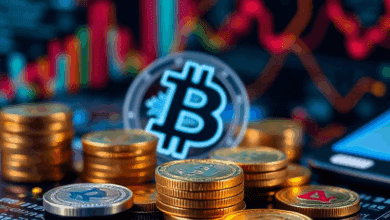Digital financial inclusion – banking the unbanked

Expanding access to banking services for populations without formal accounts requires leveraging mobile technology combined with microfinance models. Recent studies show that over 1.7 billion adults globally remain excluded from traditional financial systems, limiting their ability to save securely, obtain credit, or participate in economic growth. Mobile platforms reduce entry barriers by offering low-cost, convenient interfaces that bypass physical branch constraints.
Integrating tailored microcredit and savings products into mobile ecosystems enables underserved demographics to build financial histories and improve resilience against shocks. For instance, in Sub-Saharan Africa, mobile money adoption increased household financial participation by 30% within five years, demonstrating scalable inclusion impact. Regulatory frameworks encouraging interoperability and consumer protection are key enablers of this progress.
Financial service providers must prioritize seamless onboarding processes and data-driven risk assessment to serve clients lacking traditional documentation. Partnerships between fintech innovators and community organizations facilitate trust-building and localized outreach efforts critical for sustained engagement. Strategic deployment of such solutions directly addresses systemic gaps in access while promoting economic empowerment among marginalized groups.
Digital financial inclusion: banking the unbanked
Expanding access to monetary services through mobile platforms offers a pragmatic solution for populations lacking traditional accounts. Mobile money systems such as M-Pesa in Kenya demonstrate how leveraging cellular networks enables millions without physical bank branches to engage in secure transactions, savings, and credit facilities. Data from the GSMA indicates over 1 billion registered mobile money accounts globally by 2023, highlighting scalability of mobile-enabled financial participation.
Infrastructural challenges remain significant barriers where network coverage or smartphone penetration is limited. However, blockchain-based payment solutions provide alternative avenues by reducing reliance on centralized intermediaries and lowering transaction costs. For example, projects like Stellar enable near-instant cross-border remittances with minimal fees, making them viable for low-income users excluded from conventional banking infrastructures.
Technological frameworks and regulatory impact
Implementing inclusive monetary platforms requires harmonization between emerging technologies and regulatory policies. Central banks worldwide are exploring digital currencies (CBDCs) to complement existing systems by enhancing transparency and traceability while maintaining user privacy. China’s e-CNY pilot includes features designed to serve underbanked demographics through streamlined identity verification protocols integrated into mobile wallets.
Adoption rates correlate strongly with user-centric design that addresses literacy levels and local languages. For instance, India’s Unified Payments Interface (UPI) has driven exponential growth in account usage by simplifying peer-to-peer transfers via smartphones, supported by biometric authentication. According to NPCI data, UPI processed over 8 billion transactions monthly as of early 2024, reflecting its role in broadening monetary inclusion.
Financial ecosystems must also consider interoperability among different service providers to prevent ecosystem fragmentation. Open API standards encourage innovation while facilitating seamless movement of funds across diverse platforms, enhancing user convenience and trust. Countries adopting such frameworks report increased participation from previously excluded groups due to reduced onboarding friction and diversified service offerings.
The integration of artificial intelligence further optimizes risk assessment models for microloans extended via mobile channels. By analyzing behavioral patterns and transaction histories rather than traditional credit scores, lenders can offer tailored financial products to thin-file customers while managing default risks effectively. This approach has been successfully implemented by fintech firms across Southeast Asia, contributing to sustainable economic empowerment within marginalized communities.
Identifying Barriers to Access
To enhance access to monetary services among underserved populations, addressing infrastructure limitations is paramount. In many regions, lack of reliable internet and mobile network coverage significantly hinders connectivity to mobile money platforms and microfinance solutions. For example, recent ITU reports reveal that approximately 40% of rural areas in Sub-Saharan Africa remain offline, limiting adoption of electronic payment systems and remote account management.
Regulatory frameworks also present substantial hurdles. Stringent Know Your Customer (KYC) requirements and anti-money laundering (AML) policies often exclude individuals lacking formal identification documents. Case studies from South Asia indicate that over 30% of adults are unable to comply with such mandates, effectively barring them from opening accounts or accessing credit through conventional financial institutions or digital wallets.
Technical and Socioeconomic Challenges
The affordability of devices capable of supporting mobile applications restricts entry points for many potential users. Smartphones remain prohibitively expensive for low-income demographics, forcing reliance on basic feature phones incompatible with advanced financial apps. Analysis by GSMA suggests that only 48% of the global population owns a smartphone, with penetration rates dropping below 20% in certain emerging economies.
Additionally, limited financial literacy inhibits effective use of available services. Data collected in Latin America shows a direct correlation between educational attainment and engagement with microfinance or peer-to-peer lending platforms. Without targeted educational initiatives, uptake remains sluggish despite growing availability of innovative tools designed to facilitate cashless transactions.
- Infrastructure gaps: poor network coverage curtails service delivery
- Regulatory barriers: rigid compliance demands exclude vulnerable groups
- Device accessibility: high costs limit ownership of compatible hardware
- User competence: insufficient knowledge impedes platform utilization
A comparative review highlights how some fintech providers circumvent these challenges by integrating Unstructured Supplementary Service Data (USSD) protocols allowing menu-driven banking via basic phones. M-Pesa’s success in Kenya exemplifies this approach, achieving widespread adoption despite infrastructural constraints by enabling transactions without smartphones or internet access.
Tackling these impediments requires multi-stakeholder collaboration incorporating public policy reform, investment in telecommunication infrastructure, subsidization programs for device acquisition, and comprehensive user education campaigns. Aligning incentives between regulators and innovators will foster environments where alternative credit scoring models and biometric authentication can expand reach while maintaining compliance standards.
The trajectory towards broader monetary service adoption depends on overcoming entrenched systemic obstacles through scalable technological innovations coupled with inclusive governance models. Continuous monitoring using granular data analytics will enable refinement of strategies tailored to distinct regional contexts and demographic profiles.
Leveraging Mobile Money Solutions
Deploying mobile-based payment platforms significantly increases access to monetary services for populations lacking traditional financial accounts. By utilizing mobile technology, providers offer secure, scalable methods that bypass physical branch limitations and reduce transaction costs. For instance, M-Pesa in Kenya demonstrated a 20% rise in household income among users within five years by facilitating peer-to-peer transfers and micro-lending capabilities without requiring formal identification or credit history.
Integration of mobile wallets with microfinance initiatives expands credit availability to underserved demographics by enabling real-time data collection on spending and repayment behavior. This approach allows lenders to refine risk models using behavioral analytics rather than relying solely on conventional collateral. As a result, institutions such as Tala have extended small loans via smartphone apps across multiple emerging markets, achieving repayment rates exceeding 90%, highlighting the efficacy of digital channels in broadening monetary inclusion.
Mobile money platforms also improve transactional transparency and compliance by embedding regulatory features like Know Your Customer (KYC) verification through biometric authentication and geolocation tracking. These technologies ensure adherence to anti-money laundering protocols while maintaining user convenience. In Bangladesh, bKash’s partnership with regulatory bodies facilitated over $10 billion in transactions annually, demonstrating how secure mobile solutions can operate within stringent legal frameworks and support economic growth.
Future scalability of these systems depends on interoperability between different service providers and integration with national identity databases. Open APIs and blockchain-enabled ledgers present opportunities for seamless cross-platform transfers and auditability without compromising data privacy. Countries advancing such infrastructures–like India’s Unified Payments Interface (UPI)–showcase how interoperable networks foster competitive ecosystems that enhance user experience and sustain long-term financial empowerment.
Integrating Biometric Authentication
Implementing biometric verification systems enhances secure access to mobile monetary services, significantly expanding reach to populations previously excluded from conventional financial frameworks. Facial recognition and fingerprint scanning technologies enable instant identity confirmation, reducing reliance on physical documentation and mitigating risks of fraud. For instance, Nigeria’s fintech sector reports a 30% increase in user registration after deploying biometric login features, reflecting improved confidence among users lacking formal identification.
Mobile-based biometric authentication leverages built-in smartphone sensors to facilitate seamless entry into accounts without compromising security. Voice recognition algorithms combined with behavioral biometrics have shown efficacy in remote areas where network stability is inconsistent, ensuring continuous availability of payment platforms. This approach proves critical for regions with limited infrastructure where traditional password resets or PIN recovery options are impractical.
Technical Mechanisms and Security Protocols
Biometric systems rely on unique physiological or behavioral characteristics such as iris patterns, fingerprints, or typing rhythms captured through mobile devices. These identifiers are processed through machine learning models that generate encrypted templates stored either locally on devices or within secured cloud environments complying with data protection regulations like GDPR and CCPA. Multi-factor authentication (MFA) incorporating biometrics alongside OTPs or device tokens further strengthens defense against unauthorized access.
Data transmission utilizes end-to-end encryption protocols such as TLS 1.3 to prevent interception during authentication exchanges. Moreover, liveness detection techniques counter spoofing attacks by verifying active presence rather than static images or recordings. Case studies from India demonstrate that Aadhaar-enabled payment systems employing iris scans have reduced identity theft incidents by over 40%, underpinning the reliability of biometric safeguards in inclusive monetary ecosystems.
- Examples of applied biometric modalities:
- Fingerprint scanners integrated into mobile wallets
- Facial recognition for app login and transaction approval
- Voiceprint analysis for call center authorization
- Iris recognition at ATM interfaces supporting cardless withdrawals
The incorporation of biometrics also addresses challenges related to scalability and cost-efficiency in delivering account access solutions across diverse demographics. Automated onboarding processes utilizing selfie matching paired with government-issued ID validation streamline customer acquisition while adhering to KYC mandates. In Latin America, fintech firms leveraging these methods report a reduction in onboarding times from days to minutes, facilitating faster integration into economic participation.
Regulatory frameworks continue evolving to accommodate biometric usage within monetary services; however, privacy concerns necessitate transparent consent mechanisms and robust audit trails. Collaboration between technology providers, regulators, and financial institutions remains fundamental for standardizing interoperability protocols and fostering trust among target populations striving for equitable service availability via mobile channels.
Building Trust Through Digital Literacy
Enhancing knowledge about mobile platforms and microfinance services is imperative for expanding access to monetary tools among populations without traditional banking relationships. Empirical studies demonstrate that tailored educational programs increase adoption rates of electronic payment systems by up to 40%, reducing skepticism and perceived risks associated with unfamiliar interfaces. For instance, a World Bank pilot in Southeast Asia showed that participants who completed structured tutorials on mobile wallets exhibited a 35% higher transaction frequency compared to control groups.
Understanding the mechanics behind decentralized ledgers and encrypted transactions empowers individuals to engage confidently with emerging financial instruments. The integration of blockchain technology in peer-to-peer lending platforms not only streamlines processes but also demands a baseline comprehension of cryptographic principles to mitigate fraud risks. Case data from Kenya’s M-Pesa ecosystem reveals that users who received targeted instruction on digital security experienced 28% fewer account breaches over a 12-month period.
Technical Approaches to Education
The deployment of interactive modules via smartphones offers scalable solutions for improving monetary literacy in underserved regions. Adaptive learning algorithms can customize content based on user proficiency levels, enhancing retention and practical application of knowledge. A pilot program conducted by the Gates Foundation utilized gamified lessons within mobile apps, resulting in a 22% increase in loan repayment compliance among microfinance beneficiaries.
Moreover, partnerships between telecommunications providers and fintech firms facilitate broader dissemination of instructional material while ensuring network reliability crucial for uninterrupted service. Regulatory frameworks supporting such collaborations have shown positive outcomes; Nigeria’s Central Bank reported a 15% rise in mobile money account registrations following policy reforms encouraging joint ventures focused on client education.
- Emphasize transparency in transaction processes to build user confidence.
- Incorporate real-time support channels within applications for immediate assistance.
- Leverage community-based workshops alongside digital tools for comprehensive outreach.
Ultimately, fostering familiarity with technological infrastructures reduces barriers related to mistrust and misinformation, enabling more inclusive participation in evolving economic ecosystems. Continuous assessment through biometric authentication success rates and behavioral analytics further refines educational strategies, ensuring alignment with demographic-specific needs and preferences.
Scaling partnerships with fintechs: accelerating mobile money access for underserved populations
To maximize reach among those without traditional financial services, expanding collaboration between established institutions and fintech innovators must prioritize mobile-first microfinance solutions. Leveraging APIs to integrate seamless payment rails, loan origination platforms, and identity verification systems enables rapid onboarding of users previously excluded from formal money channels. For instance, embedding biometric authentication within mobile wallets enhances security while reducing friction in low-infrastructure environments.
Emerging protocols such as Layer 2 scaling on blockchain networks can lower transaction costs and increase throughput, critical for micropayments and small-scale lending products targeting marginalized demographics. Cross-sector partnerships that combine fintech agility with regulated entities’ trust frameworks create scalable ecosystems where credit scoring leverages alternative data sources like mobile airtime usage or merchant transactions–unlocking new underwriting models for microfinance.
Key implications and future outlook
- Mobile-centric architecture: Designing lightweight applications compatible with feature phones ensures broader accessibility beyond smartphones, crucial in regions where device penetration remains uneven.
- Interoperable infrastructure: Open standards and modular APIs foster multi-provider ecosystems, enabling consumers to navigate diverse service offerings without vendor lock-in–this accelerates adoption among financially sidelined groups.
- Regulatory alignment: Proactive engagement with compliance bodies around KYC/AML regimes adapted for digital identities will reduce onboarding barriers while safeguarding systemic integrity.
- Data-driven credit assessment: Incorporation of AI-powered analytics utilizing nontraditional inputs expands microcredit availability, mitigating risk and enhancing portfolio quality across partner platforms.
- Sustainability through shared-risk models: Joint ventures combining fintech innovation with institutional capital pools distribute risk exposure effectively, allowing scalable product deployment aimed at economic inclusion.
The trajectory points toward a hybrid ecosystem where distributed ledger technologies underpin transparent transaction histories, fostering trust among users traditionally skeptical of formal savings or loan products. As partnerships scale, the convergence of secure mobile interfaces with advanced underwriting mechanisms will redefine how underserved communities engage with money services–transforming socio-economic mobility prospects globally.






